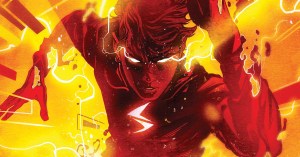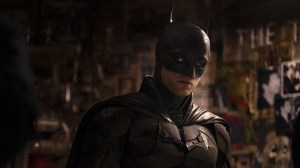
Videos by ComicBook.com
That isn’t to say that the New 52 hasn’t obviously influenced them. In terms of costume design, some story sensibilities, etc., there’s been an impact — which makes sense, given that it seems likely that was the whole point of the New 52.
Still, there are some pretty key differences that we’ve spotted just from what little we have to work with so far (Arrow, The Flash, Gotham, Constantine and Man of Steel).
Like what? Well…
Everything must be “earned”

Oliver Queen started as a killer and had to work his way to being a hero. Along the way, his costume evolved, he added a mask, he’s got a name (even if the “Arrow” isn’t “Green” yet) and he’s becoming a local hero in Starling City after his role in taking down Deathstroke and his Mirakuru Army.
The New 52 skipped over all those unpleasant growing pains, opting instead to shunt the characters to a point where almost everyone was five years into their career, with established reputations and an adoring public, by the time their #1 issues came around. It was even more jarring because many of the first issues or first arcs tried to deal with the idea of “earning” the heroism and the idea that humankind wasn’t particularly receptive to aliens or super-beings that looked and acted different…but those threads were almost entirely forgotten within the first year of publication.
In the old days, characters had to be introduced to the audience as they were being introduced to the DC Universe, because…well, people didn’t have baggage. The New 52 versions of characters have been able to avoid this element of character development and lean on readers’ preconceived notions of the characters from before the reboot. As a result, the only things that have really been explored in any depth are the things that are different, leaving everything that’s similar to the pre-Flashpoint Universe basically unexplored. It’s an understandable creative choice, but it’s left some fans understandably cold and it makes getting new readers just as difficult as it was back when the books had triple-digit issue numbers on the front.
Meanwhile, the TV shows and films know that they have to be an entry point for some viewers, since many of these characters have no particular previous relationship with the audience. In the case of Arrow, The Flash and Constantine, they’re all radically different from their previous screen incarnations (in Smallville, The Flash from the ’90s and Constantine with Keanu Reeves, respectively). Other characters, such as Harvey Bullock, Renee Montoya and the rest of the Gotham Central crowd in Gotham, have never even been depicted in live-action before. As a result, and with an audience of millions of uninitiated viewers, you must give us origin stories.
The real question is how they’ll deal with Batman, with whom almost every viewer already has a relationship.
No shared universe

What I mean, though, is that in the post-New 52 world, there is a lot more homogeneity to the feel of the DC Universe. John Constantine and Swamp Thing fled Vertigo to launch superhero books (see also the WildStorm heroes), the overall aesthetic of the costumes has been designed by the same handful of artists to create a more consistent look and feel across the DC Universe…all of these things were done basically to project a BRAND.
And yet, when Geoff Johns says that he wants to give the creators of the TV series creative freedom to do what they want to do without worrying about other shows, the end result seems to be creating a bunch of shows that are thematically different and don’t necessarily reflect any kind of coherent mission statement.
Don’t get me wrong — I actually enjoy this to a great extent. Books like Marc Andreyko’s Manhunter and James Robinson’s Starman would never have been as good if they had to worry about what Green Lantern was doing this month. Still, it’s a jarring difference between the vast majority of the publishing line, and what they’re doing in other media.
There’s progression

These aren’t small things for a company whose current mindset is that being married makes Superman and Batwoman too “old.”
DC was once a company built on “legacy.” Superman had a reputation built up over years or decades, and generations — plural! — of heroes who looked up to him. There were more Flashes, Green Lanterns, Manhunters, Atoms and Starmen than anybody knew what to do with. None of these characters — or very few of them, anyway — are still in use in the DC Comics Universe…but the writers working on the TV series grew up reading that version of DC Comics. They want to use Ted Kord. They want to use Wally West. And, at the end of the day, they’re going to win some of those fights.
That’s the one I’m happiest about.





